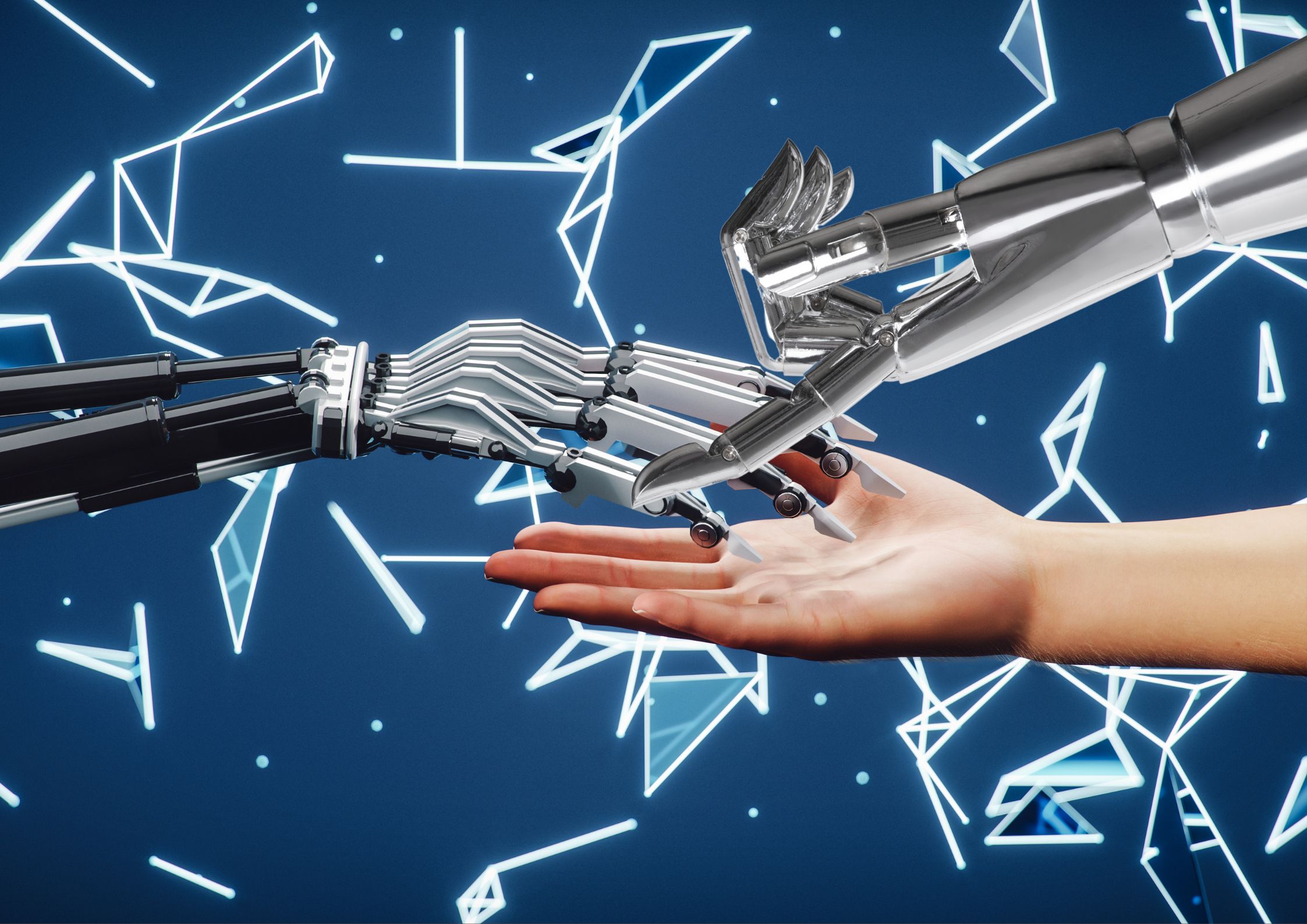.png)

Dev Chandrasekhar advises corporates on big picture narratives relating to strategy, markets, and policy.
March 3, 2025 at 3:07 PM IST
The arrival of Claude 3.7 is the clearest indicator yet of artificial intelligence’s rapid encroachment into software development. Junior and lower-skilled developer roles, already under pressure, face an even steeper decline. Demand is shifting towards, senior, systems-oriented positions that focus on AI governance, system designs, and security oversight.
In October 2024, Google CEO Sundar Pichai stated that “more than a quarter of the new code at Google was generated by AI, then verified and accepted by engineers." Meanwhile, a GitHub survey revealed that over 97% of developers across four countries had integrated AI coding assistants into their workflow. A Pluralsight survey said approximately 75% of IT professionals expressed concern about AI potentially rendering their skills obsolete.
By late January, GitHub's Copilot had 1.3 million users—a 30% increase from the previous quarter, according to parent company Microsoft—while more than 77,000 organisations had implemented it.
With its "hybrid reasoning" capabilities and coding prowess, Anthropic's Claude 3.7 has the ability to pause and consider responses. It is also proficient in coding across multiple programming languages, with the introduction of Claude Code, an AI tool that acts as an "active collaborator" in the development process. Claude Code can search and read code, edit files, write and run tests, commit and push code to GitHub, and use command line tools.
Major technology firms including Canva, Replit, and Vercel have reported exceptional performance in practical coding scenarios, particularly proficient in managing comprehensive full-stack modifications and navigating intricate software architectures. This means a potential down-drawing of resources required for time-consuming and developer-involving structured tasks, particularly in coding, code review, and automation workflows.
DevSecOps Transformed
In recent years, DevSecOps has become a popular model that integrates security practices throughout the entire software development lifecycle. It's an extension of the DevOps philosophy, which aims to break down silos between development and operations teams to deliver software faster and more reliably.
“Traditional” DevSecOps is primarily a human-driven process. It involves close collaboration between developers, operations professionals, and security experts. Teams use a variety of tools and practices to ensure security is baked into every stage of development. This includes automated security testing tools, code reviews with a focus on security, and regular security audits. Infrastructure as Code practices are used to ensure consistent and secure deployment environments. Continuous Integration and Continuous Deployment pipelines incorporate security checks at various stages, from static code analysis to dynamic application security testing.
However, this approach faces challenges. The sheer volume of code and the complexity of modern applications made it difficult for human teams to catch every potential vulnerability. The rapid pace of development in many organisations also puts pressure on security teams to work quickly, sometimes leading to oversights.
Older LLMs struggle with DevSecOps transformation due to:
- Weak reasoning capabilities for complex security patterns
- Small context windows preventing full codebase analysis
- Poor integration of diverse security knowledge sources
- Limited understanding of programming languages and principles
- Lack of specialised security domain expertise
- Inability to identify novel threats in emerging technologies
- Difficulty bridging natural language requirements and technical implementation
These limitations restricted older models to handling specific security tasks rather than enabling the comprehensive, continuous security reasoning needed for true DevSecOps transformation.
Claude 3.7, however, upends DevSecOps from a human-driven process to an AI-augmented approach by:
- Analysing vast codebases at scale to detect vulnerabilities humans might miss
- Enabling continuous security reasoning throughout development instead of periodic checkpoints
- Democratising security expertise by making it accessible to all developers
- Providing contextually appropriate remediation strategies for specific applications
- Integrating knowledge from multiple security frameworks and threat intelligence sources
- Translating natural language security requirements into technical implementations
- Predicting potential security weaknesses based on code patterns and architecture
This AI-augmented approach converts DevSecOps from a resource-constrained, checkpoint-based process to a continuous, integrated capability that scales with development and addresses expertise shortages.
The Future of AI-Led DevSecOps
As AI takes over many routine coding tasks, we're likely to see a decrease in demand for junior and lower-skilled positions across the board. This includes:
- Junior developers with limited experience
- Infrastructure engineers focused on basic setups
- Security configuration specialists handling standard protocols
- Deployment automation engineers working on routine pipelines
- Manual code reviewers
These new roles reflect a shift from hands-on coding to higher-level system design, AI guidance, and governance. They require a combination of technical skills, domain expertise, and a deep understanding of AI capabilities and limitations. The emphasis will shift from coding skills to system design, AI prompt engineering, and governance.
In the future AI-enabled DevSecOps, a new collaborative workflow emerges, bringing together specialised roles to enhance efficiency, security, and innovation. Domain-Technical Translators will be the bridge between domain experts (such as healthcare professionals, financial analysts, or legal experts) and AI systems. They will take the lead by identifying DevSecOps challenges that are ripe for AI intervention. They will analyse existing processes for inefficiencies and prioritise potential AI applications based on their projected impact and feasibility. For example, in a healthcare setting, a Domain-Technical Translator might work with doctors to understand their needs for a patient management system, then collaborate with AI Prompt Engineers to ensure these requirements are accurately translated into prompts for the AI system.
With clear targets, AI Prompt Engineers will step in to design and optimise prompts for specific DevSecOps tasks. They will work closely with the Translators to understand the nuances of each challenge and develop comprehensive prompt libraries that address common DevSecOps activities. This ensures that AI tools can be effectively leveraged across various stages of the development and security pipeline. For instance, in a financial services context, an AI Prompt Engineer might create prompts that instruct the AI to generate code that adheres to specific financial regulations, incorporates industry-standard security practices, and uses approved APIs for sensitive operations.
Domain-AI Governance Engineers will play a crucial role in maintaining the integrity and compliance of AI solutions. They will review proposed implementations against established standards, develop guidelines for responsible AI use, and ensure that all AI integrations align with organisational policies and industry regulations. In a heavily regulated industry like finance, a Domain-AI Governance Engineer might create systems to audit AI-generated code for compliance with financial regulations, implement controls to prevent AI from accessing or processing certain types of sensitive data, and develop protocols for human oversight of critical AI-driven processes.
The broader DevSecOps team then integrates these AI solutions into their existing pipeline—workflows, training team members, and establishing necessary oversight mechanisms to maintain control over critical AI-driven decisions.
The final step is continuous optimisation. The team collects performance metrics and gathers feedback to refine AI prompts and governance policies. Translators remain vigilant, identifying new opportunities for AI integration as the DevSecOps landscape evolves.
As the new AI-enabled software development gathers traction, organisations are set for a profound transformation in their development and security practices. However, this evolution will also bring new challenges, such as ensuring ethical AI use, managing the complexity of AI-human interactions, and continuously upskilling the workforce. Organisations must act decisively. Those clinging to legacy workflows risk technical debt; those embracing AI-driven DevSecOps will define the next era of software engineering.




